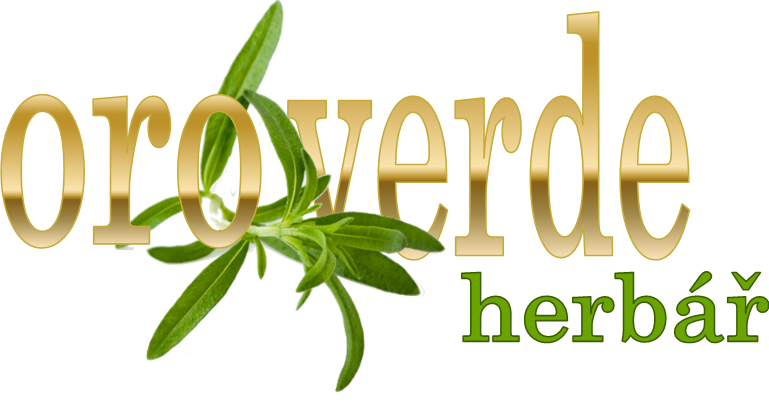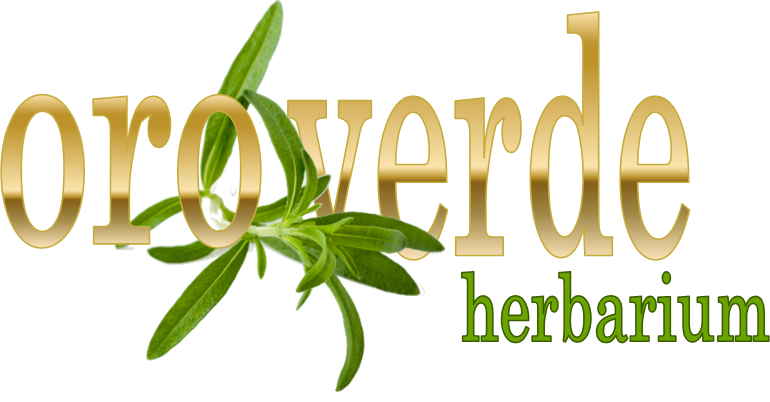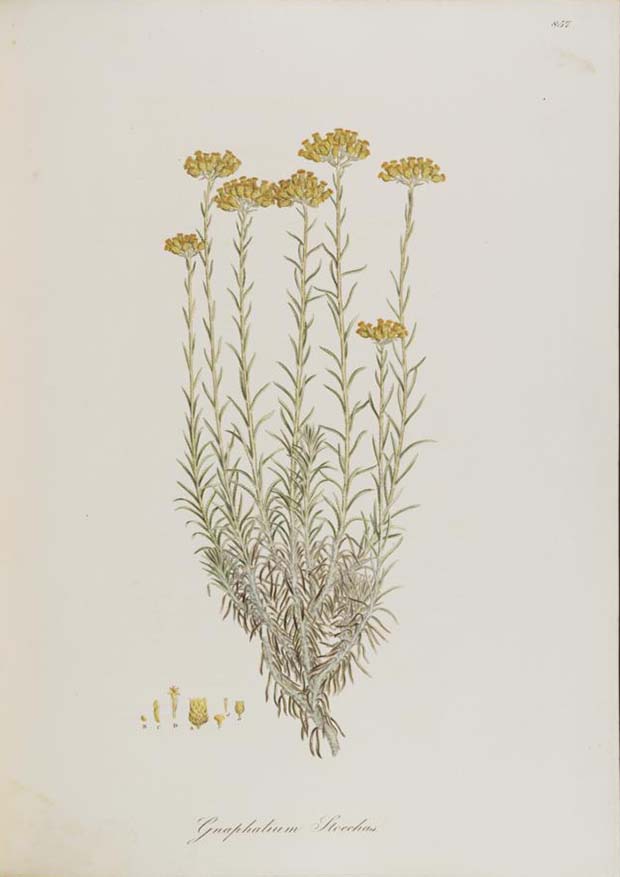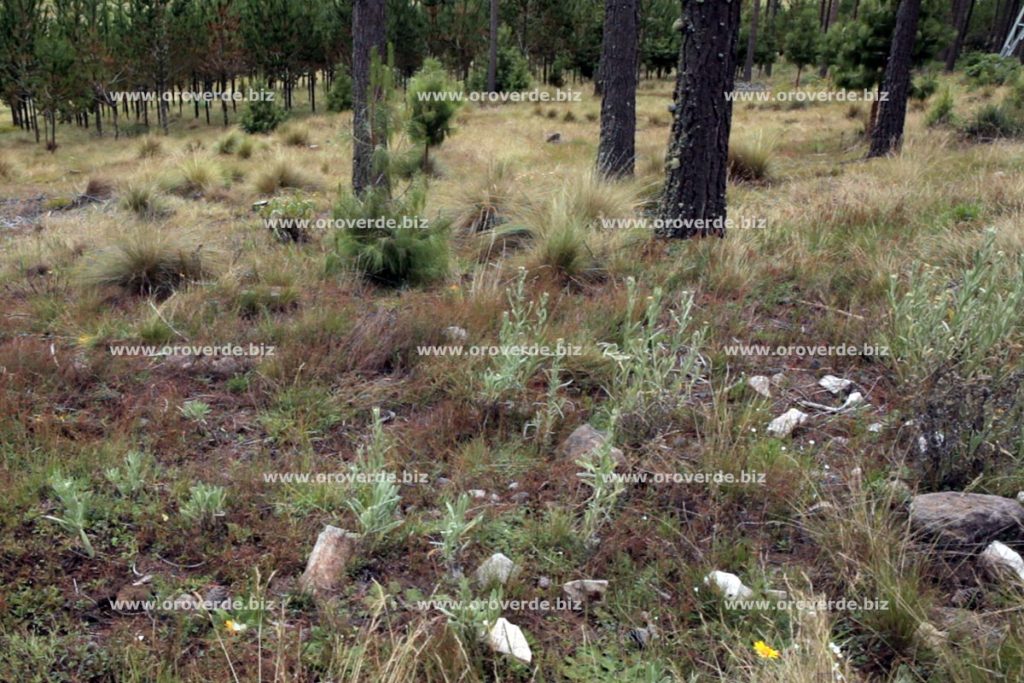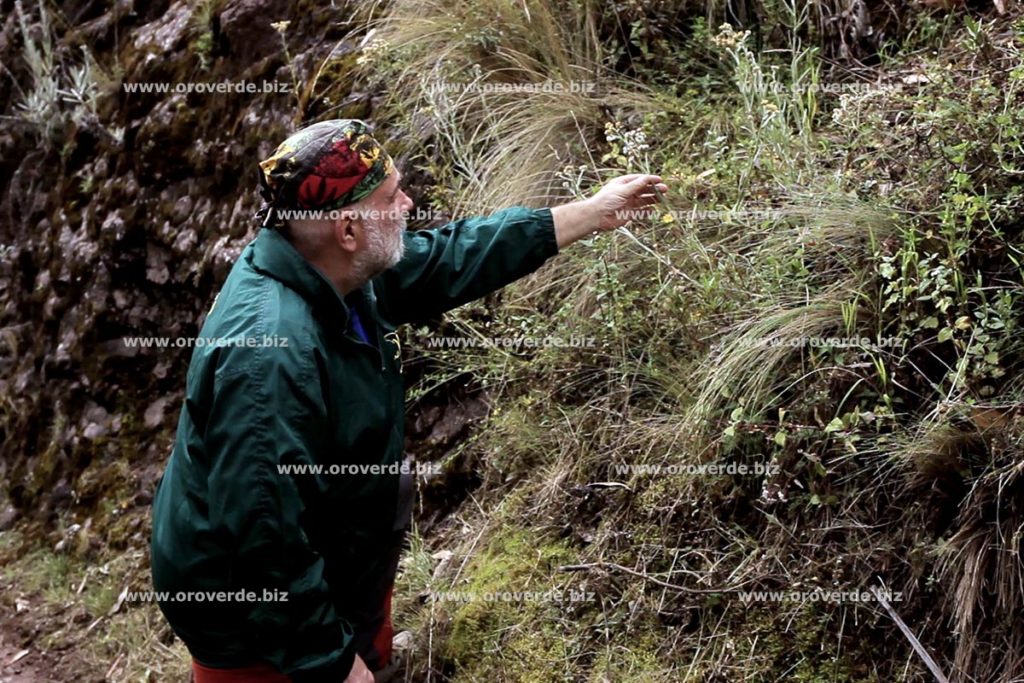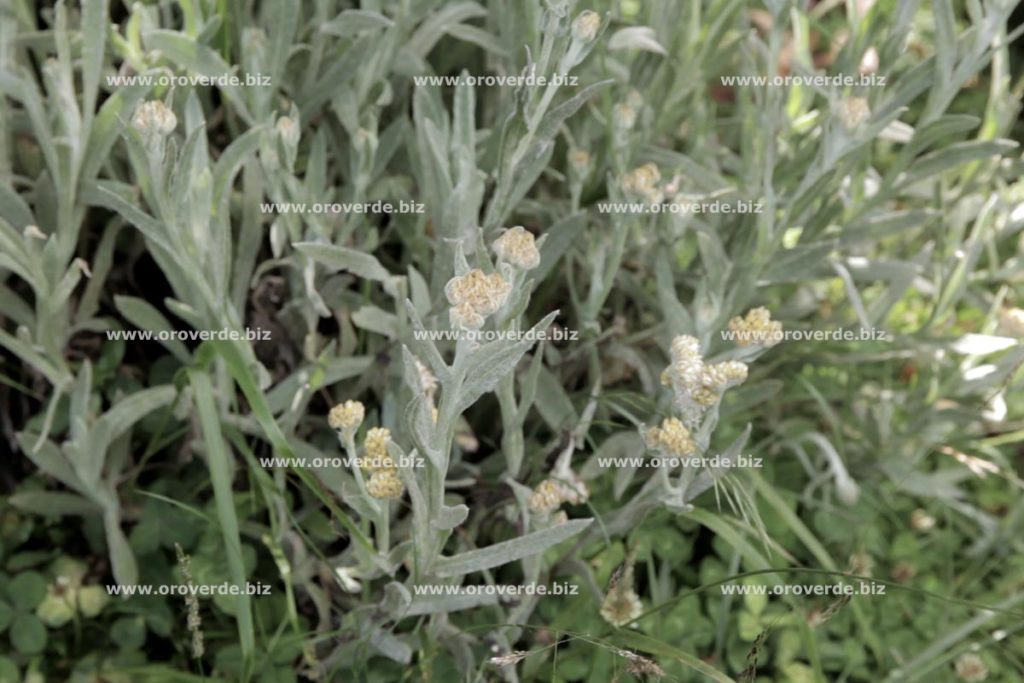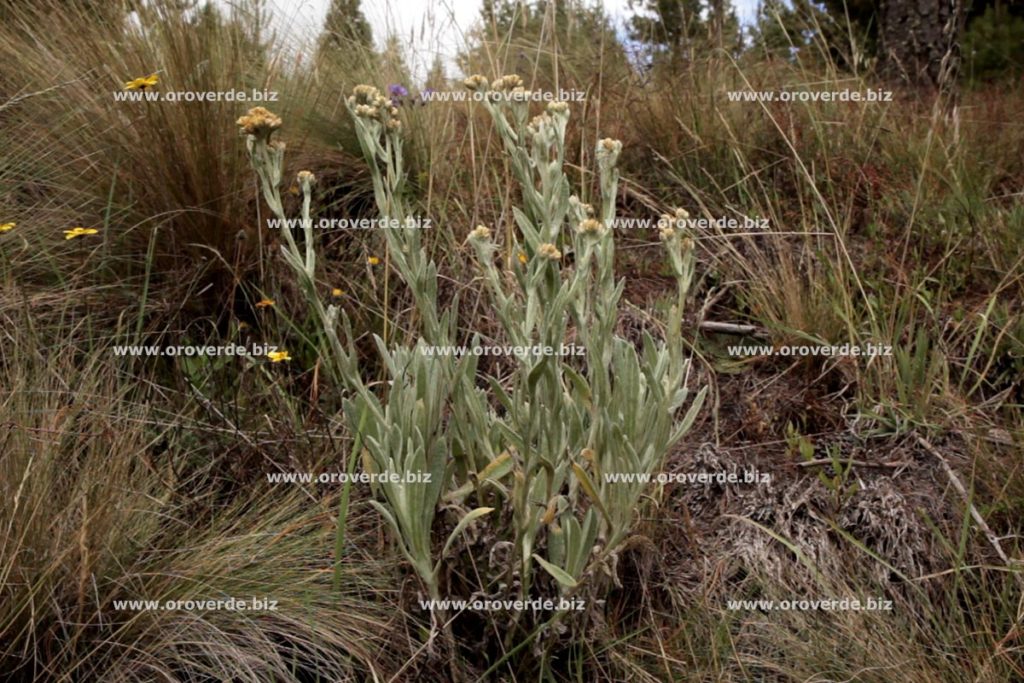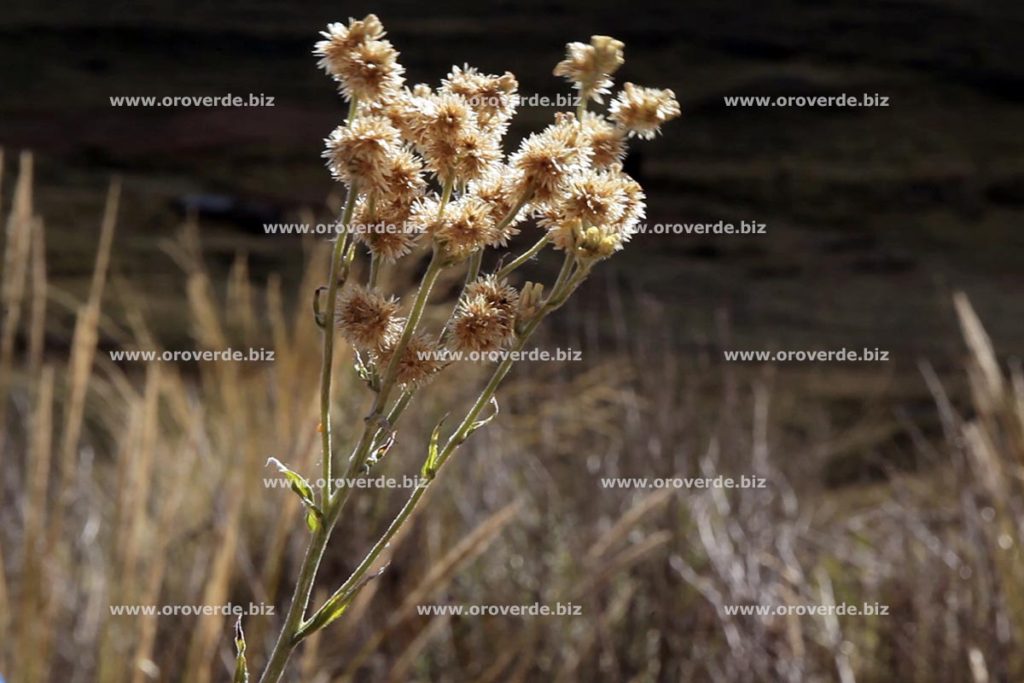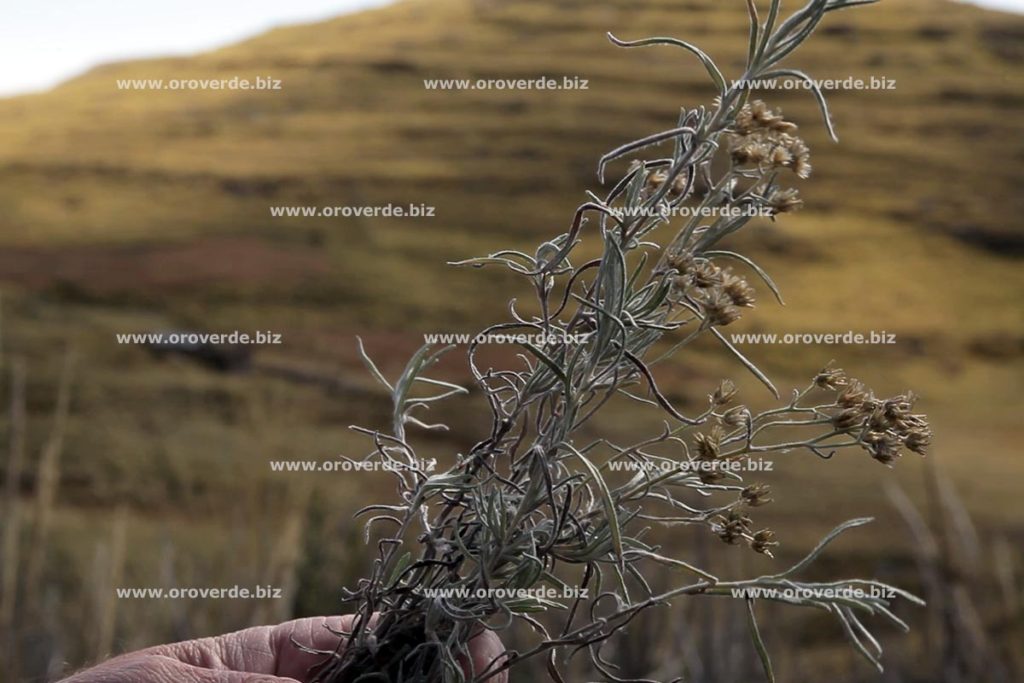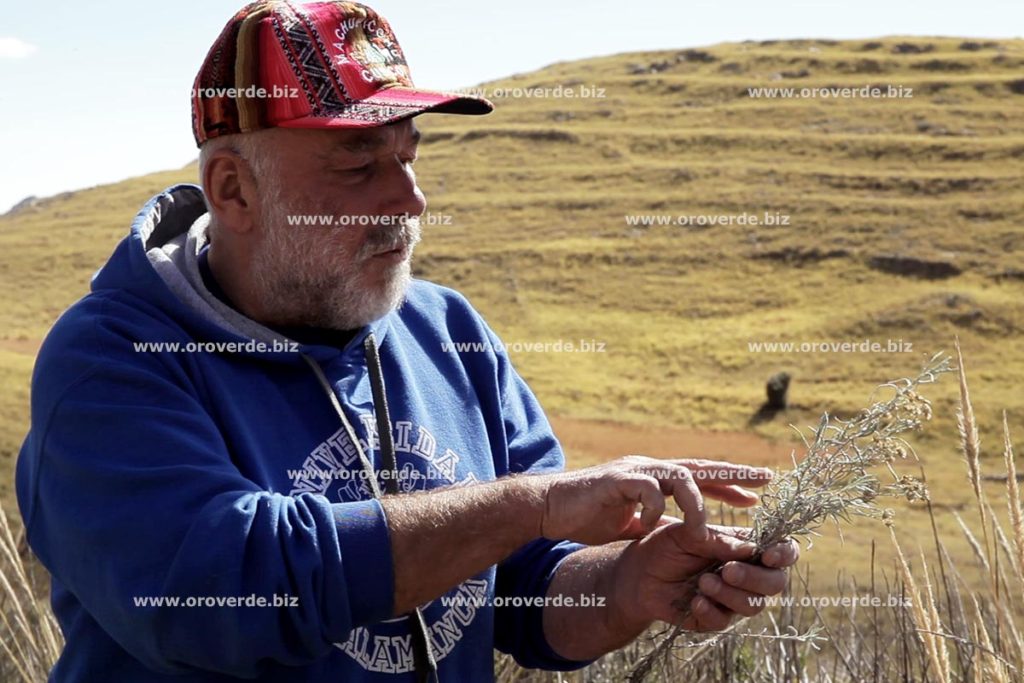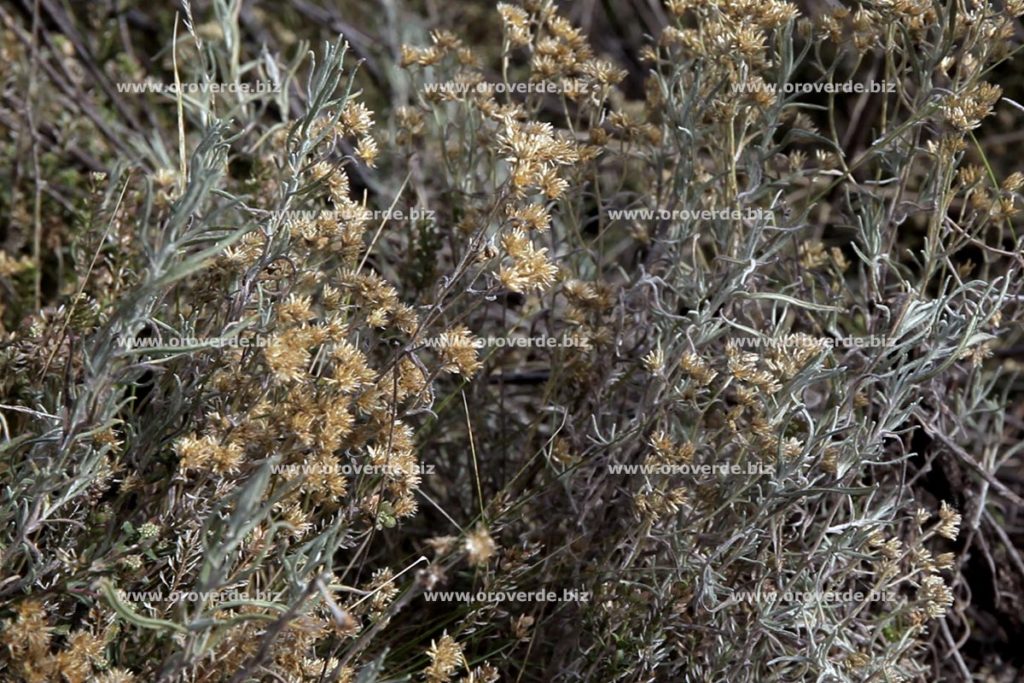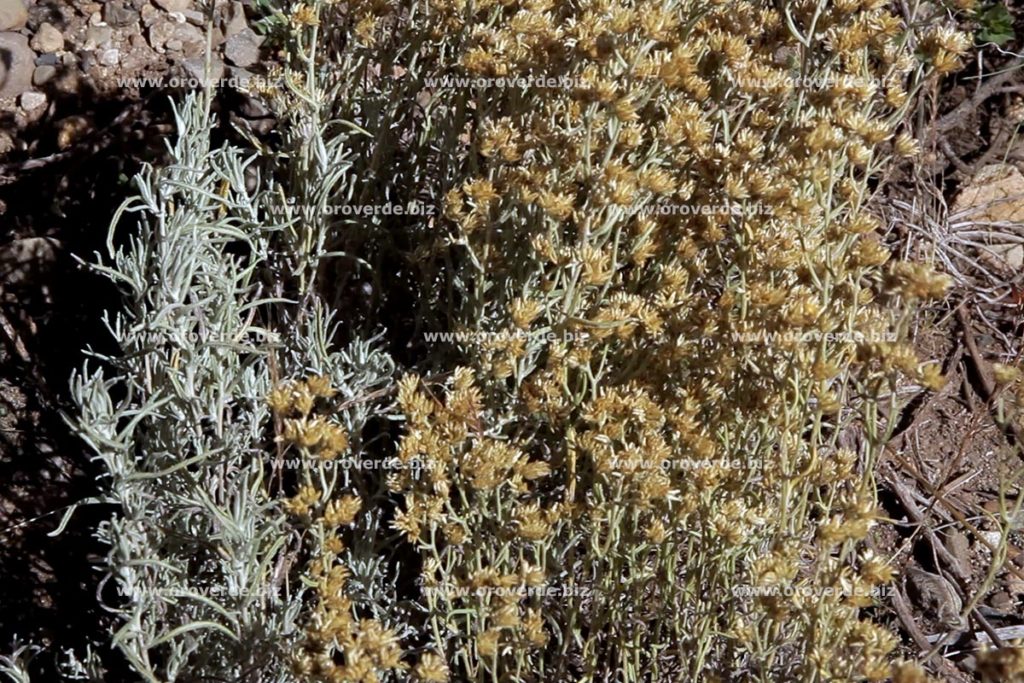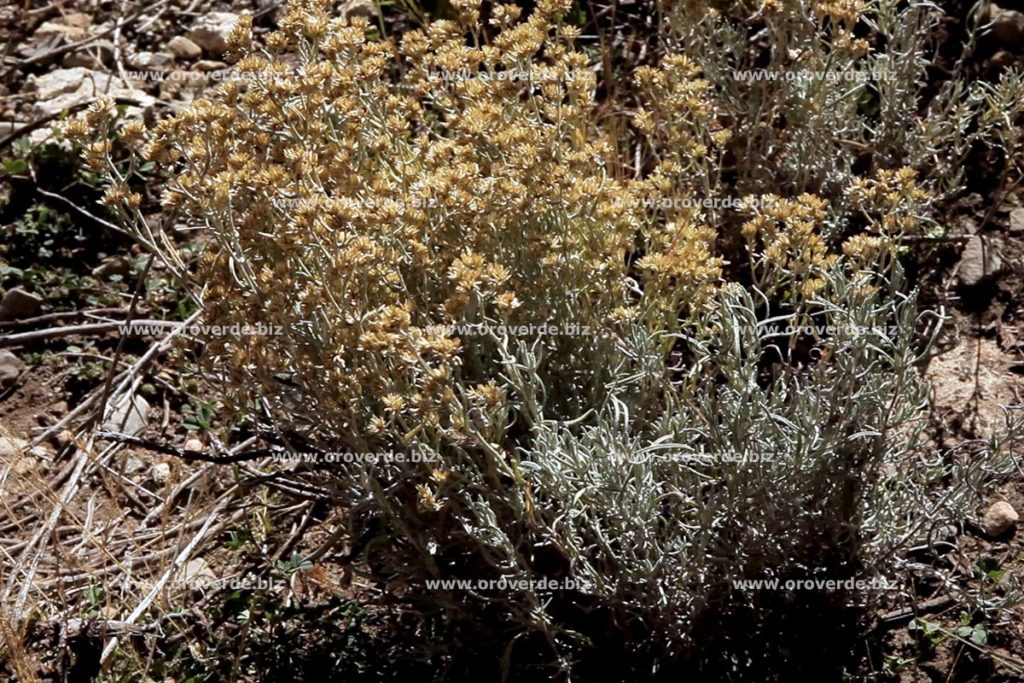It affects the following diseases:
Family: Asteráceae ( Compositae ) ( hvězdnicovité (složnokvěté))
Genus: Gnaphalium
Species: graveolens (vira vira Mold.)
Common names:
Hierba de la viuda, siempre viva, hierba de la iuca, dinka-i-awen, hierba de la vida, huira huayo, huira-huira, vira-vira.
Part(s) used:
Above-ground parts of plant (Herba gnaphalidi).
Description:
Is a kind of mountain fosterling from the stellate section. It is a small, between light sage-green and yellow colour plant with yellow flowers, which can grow up to the height of 20 – 40 cm. The plant is covered by whitish fluff. The occurence is in the altitude of 3500 above sea level. In stony landscape it looks for humid even wet places of the south-american Andes. Some information sources show the usage of the kind called Gnaphalium graveolens ssp. viravira Mold., resp. Gnaphalium viravira Mold. (mainly in the areas around Cuzca), other ones under the name WiraWira, a kind of Gnaphalium dombeyanum D.C. (mainly in the areas of Arequips). In the traditional native healing method of the mountain Indian tribes the plant is ethnobotanically used for treatment of throat mucosa catarrh, air passages, during cold, rheum cough and similar problems. It contains tannins, oozes, alcaloids, triterpens, sterols, betasitosterol, glucosides, antracinons, flavons, chalcons, diterpenic labdens and gnaphalens to which are assigned the calming effects acting mainly on the air passages mucosas, throat and nose mucosas that they ease if they are blocked. In some sources is also described the antiasthmatic and spasmolythic effect. For its specific, slightly bitter and greatful taste it is a sought out drink especially in the cold weather.
This way was the traditional usage passed to us by a selesian monk of Czech origin, the reverend Jaroslav Soukup, SDB, who was working for a long time in Amazonia with native inhabitants and who is deservedly considered to be the founder of the Peruvian flora botanic classification and the chief ethnobotanist. Among others also the author of the Dictionary of Peruvian flora native terms and the Catalogue of tribes.
Contraindications:
Not described.
Side effects:
The contentual substances can cause an allergic reaction for extra sensitive people.
Traditional enthomedicinal uses:
When cold, air passages or sinuses inflammation use infusion prepared in the ratio of 3-5 grams per litre of water.
More information you can look on the site about ordinary preparation of the herbal remedies.
Phytoterapeutic properties:
Antimicrobial, antiseptic, antiasthmatic, bronchodilator, expectorant, spasmolythic.
Phytochemical composition:
Alcaloids, antraquinons, betasitosterol, derivates of labden, gnaphalens, mucilages, steroles, tannins, triterpens.
Source:
- Diccionario enciclopedico de plantas utiles del Perú, BRACK EGG A., CBC – Centro de Estudios Regionales Andinos «Bartolomé de Las Casas», Cuzco, Perú, 1999, ISBN 9972-691-21-0
- Plantas medicinales utiles en el Surandino del Perú, ROERSCH C., VAN DEN HOOGTE L., Koeltz Scientific Books, Königstein, Germany, 1998, ISBN 3-87429-369-67-2
- Vocabulario de los nombres vulgares de flora peruana, SOUKUP J. SDB, Editoria Salesiana, Lima, Perú, 1975
- Ziololecznictwo amazońskie i andyjskie, ŹUROWSKA K., TowerPress, Gdańsk, Polska, 2001, ISBN 83-87342-41-6
